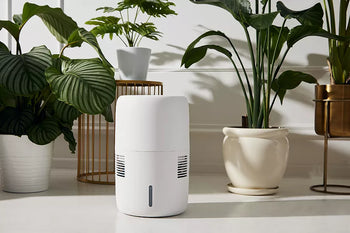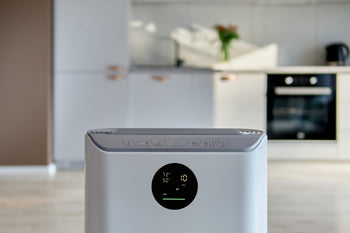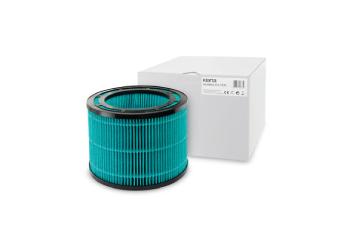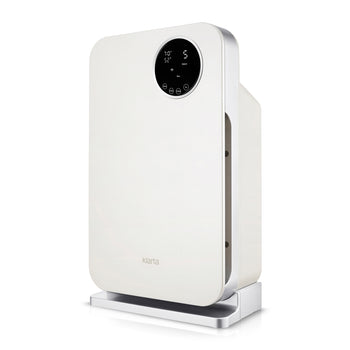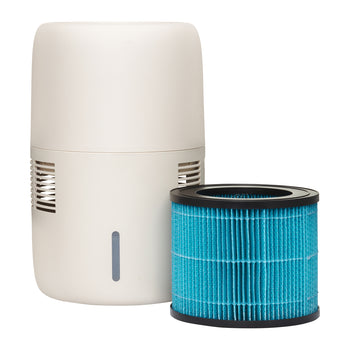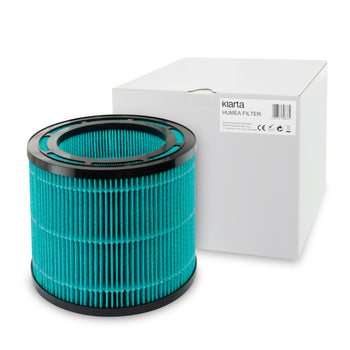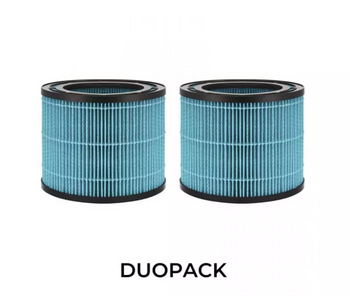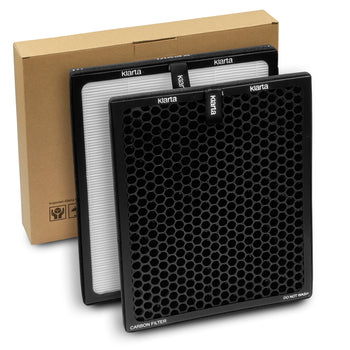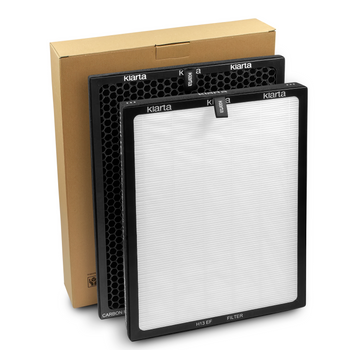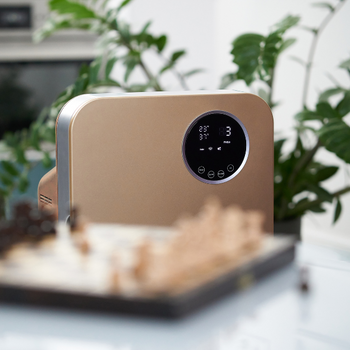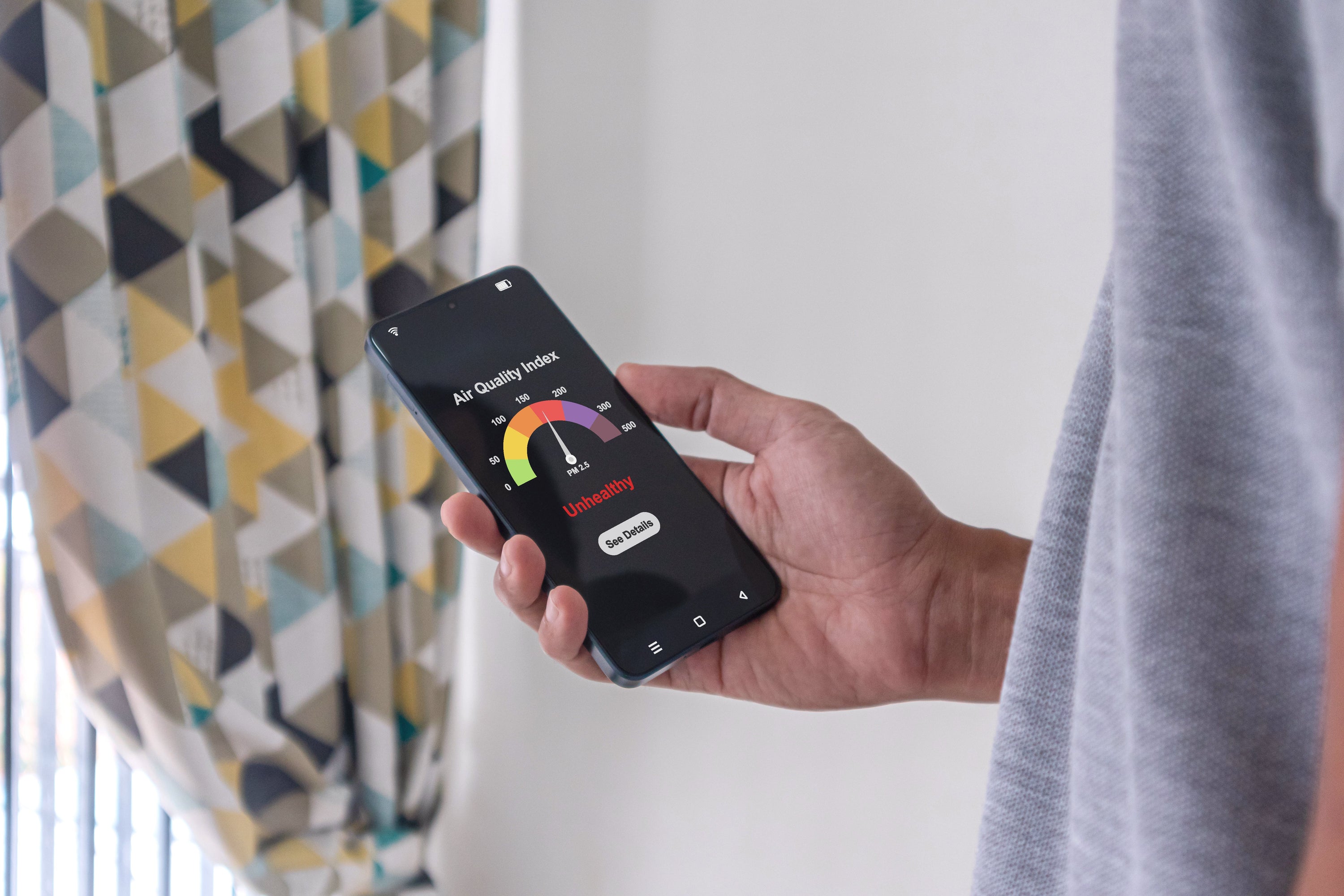
Home air quality standards: What are they and why are they important? - Klarta
The quality of air in the home not only directly affects our energy levels and well-being on a given day but also significantly contributes to our overall health. This is especially true for people with weakened immune systems and those suffering from chronic diseases, such as various allergies. Prolonged exceedances of standards for particulate matter, concentrations of heavy metals, volatile organic compounds, as well as humidity and carbon dioxide levels, lead to what is known as sick building syndrome. What are the air quality standards in the home, and why are they important?

Air quality standards at home – what is taken into account?
- Level of particulate matter (PM2.5, PM10, PM1)
- Level of VOCs (benzene, acetone, toluene, etc.)
- Humidity
- Temperature
-
Carbon dioxide level
Level of particulate matter
Particulate matter from low emissions, industry, and transportation is a mixture of small solid and liquid particles. These tiny particles include by-products of coal combustion, worn parts of brake discs and pads, and dirt and dust stirred up from the streets.
All of these form microscopic dust with a diameter of a few microns (e.g., PM2.5 – 2.5 microns), which penetrates our respiratory system into the lungs, leading to frequent infections, exacerbation of asthma and allergy symptoms, respiratory, cardiovascular, and urinary cancers, as well as developmental disorders and lower muscle mass in newborns.
For PM2.5 and PM10 particulate matter, the WHO introduced new recommendations in 2021. The maximum concentration for PM2.5 is now: 15 µg/m³ daily and 5 µg/m³ annually. For PM10: 45 µg/m³ daily and 15 µg/m³ annually. These values refer to outdoor air quality. While there are no clear recommendations for indoor particulate matter, Klarta air purifiers mercilessly tackle smog and allergens, accelerating at levels above 5 µg/m³!

Level of VOCs
Volatile organic compounds, also known as VOCs or TVOCs (from volatile organic compounds and total volatile organic compounds), are a group of organic substances with a high ability to evaporate and transition into a gaseous state. These include acetone, formaldehyde, benzene, toluene, xylene, and others.
Although not all VOCs are harmful to health, 73% of them are carcinogenic. Common side effects of VOC exposure include mucosal irritation, headaches, dizziness, nausea, and vomiting, with long-term effects including kidney and liver diseases and the development of cancers.
In both Poland and globally, there are no unified standards, but typically concentrations not exceeding 0.2-0.3 mg/m³ are mentioned. Levels of 1-3 mg/m³ may occur temporarily but should not persist over a long period. Kaiterra, specializing in air quality sensors, also recommends a concentration of 0.25 mg/m³ as safe and 0.5 mg/m³ as acceptable.
The WHO (World Health Organization) specifies limit concentrations for some substances:
- Benzene – 0.1 ppm
- Formaldehyde – 0.1 and 0.3 ppm
- Naphthalene – 10 ppm
- Carbon monoxide (CO) – 35 ppm
- Nitrogen dioxide – 3 ppm
- Tetrachloroethylene and trichloroethylene – 25 and 100 ppm, respectively

Humidity
Optimal relative air humidity for humans and animals is considered to be 40-60%. For people suffering from dry mucous membranes of the throat or nose, or allergies, this level can be slightly higher, around 50%. Air humidity is responsible for many important factors of our daily well-being, including:
- Skin hydration
- Headaches
- Sore throat
- Concentration levels
Both Klarta air purifiers and humidifiers are equipped with a hygrometer, continuously monitoring the humidity level of your immediate environment.
Temperature
The WHO states that the ideal indoor temperature for healthy and appropriately dressed individuals should be 18°C (64°F). For young children, the elderly, or those with chronic illnesses, an appropriate temperature is 20°C (68°F). The maximum recommended temperature is 24°C (75°F). On the other hand, staying in temperatures of 16°C (61°F) with 65% humidity increases the risk of respiratory diseases and allergies. The current temperature can also be checked on the screens of our air purifiers and humidifiers.

Carbon dioxide level
An adult produces about 20 liters of carbon dioxide per hour. This compound is a natural by-product of breathing and the combustion of many substances. In daily life, we often underestimate the role carbon dioxide plays in shaping our well-being. It primarily affects our ability to concentrate and causes drowsiness. When CO2 levels get too high, we feel apathetic, tired, and experience headaches. In homes, the optimal carbon dioxide concentration is considered to be 1000 ppm, and in offices, 1400 ppm. Above 2500 ppm, it becomes dangerous.
Sick building syndrome – what is it?
All the symptoms mentioned above often result from prolonged exposure to environments or buildings that are harmful to our health. Sick building syndrome refers to a condition or set of symptoms experienced in a specific place. According to WHO estimates from 2018, about 57% of offices face the problem of sick building syndrome.
Why are air quality standards important? Health protection
Air quality standards allow us to clearly determine when we are dealing with clean, slightly polluted, or alarmingly dirty air, thus protecting our health. By checking air quality data, we can choose to avoid physical activity or outdoor walks on certain days, opting instead for public transport or car travel. Residents of towns with frequent smog episodes are more exposed to:
- Upper respiratory tract infections
- Concentration problems
- Cognitive process disorders and memory issues
- Respiratory and urinary cancers
- Coronary heart disease development
- Stroke and heart attack
- Slower fetal development
-
More frequent congenital defects in newborns
How can we improve our air quality? 3 effective ways!
1. Klarta air purifiers and humidifiers
The main goal of our products is to care for our customers' health. Therefore, we place great emphasis on the rigorous operation of our products. The uncompromising nature of our purifiers is evident in their quick response to rising pollution levels. Any values above 5 µg/m³ trigger increased purification intensity. Values above 30 µg/m³ are already unacceptable for Klarta Forste 4 and Klarta Stor 2. Thanks to this, our purifiers are among the fastest in cleaning air on the Polish market!
The Klarta Humea WiFi evaporative humidifier is a safe way to quickly and controllably humidify room air. With a hygrometer, you have constant access to information about the current relative humidity level. The hydrostat allows you to set a target, comfortable humidity level for you. All this happens with the help of filters that capture bacteria, viruses, and other microorganisms, allowing you to safely use tap water.

2. Ventilating rooms
While using devices that improve air quality, one should not completely give up on ventilating homes. It is worth doing it wisely, in short 10-15 minute intervals, 3-4 times a day. This is enough to ventilate and remove excess carbon dioxide from the room without cooling the space too much.

3. Presence of flowers and plants
They absorb dust and other pollutants and help maintain appropriate humidity. Houseplants perform many useful functions, also absorbing heat and positively impacting our psyche. Read more about plants and their care in the article: Which Air Humidifier for Plants? Choose Healthy Humidification
Sources:
- Indoor Particulate Matter. Environmental Health & Safety. UMassAmherst. Accessed: 20.09.2023 [Link to study]
- Understanding TVOC: What You Need To Know About Volatile Organic Compounds. April 25, 2022. Accessed: 20.09.2023 [Link to study]
